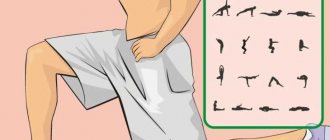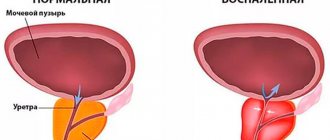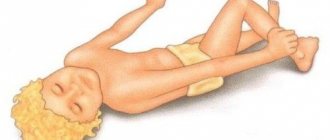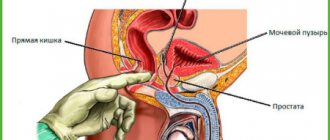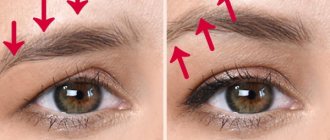Holotropic breathing is a unique technique created for use in psychotherapy. With the help of this technique, people experience experiences associated with unconscious experiences. The method is used as self-knowledge, as well as a journey into the hidden corners of a person’s consciousness.
The secret to the effectiveness of the technique lies in the activity of the subcortical layer of the brain, due to which the individual releases experiences. The practice of holotropic breathing was first discovered by Stanislav and Christina Grof, researchers of emotions in the field of psychotherapy. Experts have noticed that the air absorption technique replaces medications.
Definition of the concept
Before the appearance of the works of famous psychotherapists, people did not know what is remarkable about holotropic breathing, what it is and how it helps specialists. In Russia, this method has been officially used since 1993. According to the popular version of its origin, the followers of S. Freud actively practiced psychoanalysis, and they used psychotropic substances to put the patient into a trance.
Holotropic breathing is a technique that involves very deep and rapid breathing. The session is always accompanied by music or other sounds. At the end of the manipulation, the ward draws a plot that came to his mind while entering a trance. After the ban on certain medications in the United States, the holotropic breathing method gained recognition among psychotherapists.
Holotropic Breathwork is a technique for use in couples. The person performing the technique of rapid and deep breathing is called a holonaut, and his partner is a sitter. Holotropic breathing training is conducted by a facilitator - a teacher involved in psychotherapy.
The holotropic breathing method includes the following components:
- Breathe frequently and deeply;
- musical accompaniment;
- holonaut support;
- creation.
A holotropic breathing session cannot be carried out independently, as the experiences can be harmful to the person. Doing this alone is also not recommended due to the risk of injury. The technique is often accompanied by sudden movements, screams and a desire to escape from memories.
Holotropic Breathwork: What is it?
The author of the method is US psychologist S. Groff. In our country, the method has been approved as a technology in psychotherapy since 1993.
The history of the origin of the described method is interesting. Groff was a follower of S. Freud and practiced psychoanalysis. To change consciousness, he used psychotropic substances, in particular LSD. During the sessions, Groff noticed that when the effects of the substances wore off, people began to breathe faster and deeper in order to remain in a trance.
After the use of psychotropics was banned in the United States, the scientist came up with his own method of holotropic breathing.
Holotropic Breathwork
- this is a special technique in which a person breathes very deeply and quickly, while the whole process is accompanied by music or other sounds.
After the end of the session in the classic version, there is a drawing of a mandala or another plot that came to mind during the session. The result of the process is a change in consciousness and entering a trance.
Holotropic breathwork is always done in pairs. A person who “breathes” is called a holonaut, and his partner is called a sitter. A sitter is a person who looks after the process. His responsibilities include monitoring the behavior and condition of the “breather”. The teacher teaching Holotropic Breathwork is called a facilitator.
Thus, the main elements of the data warehouse are
:
- special breathing;
- stimulating music;
- providing support to the “breather”;
- creative self-expression of personality.
In addition to HD, the “big four” recognized breathing techniques include vibration, rebirthing and Free Breathing.
Purpose of application
Before the session, it is important to understand how holotropic breathing is useful, what it is for the average person, and how to get the maximum effect from the technique. The purpose of the session is to release hidden emotions and unpleasant physical sensations; the holonaut must rethink his life.
A breathing person can not only cry and swear, but also jump and laugh. Holotropic breathwork treatment is used to correct the following conditions:
- anxiety and nervous tension;
- addiction;
- middle age crisis;
- stress.
Holotropic breathing also helps people decide on the choice of a creative component in life and realize their desires. This technique also provides an additional incentive to do what you love.
What is holotropic breathing used for?
Altered states of consciousness achieved during HD have a pronounced healing effect due to the release of emotions and unpleasant physical sensations hidden deep inside. A person recognizes a problem that is tormenting him, which allows him to analyze it and find solutions.
The goal of the holonaut is to enter a trance and authentically express oneself, i.e. the essence of your personality, no matter how unsightly it may be. The person who is breathing may begin to cry, jump, laugh, dance, sing, or swear.
Holotropic breathing is used as psychotherapy for the following conditions and diseases
:
- awareness of the causes of nervous tension and anxiety, as well as getting rid of them;
- activation of mental reserves, minimization or complete elimination of depressive states and apathy;
- addictions of various types (alcohol, drug, gaming, substance abuse);
- overcoming midlife or existential crises.
Stressful situations, lack of meaning in life are also indications for special breathing practices. In addition, HD helps you understand your creative abilities and desires.
Technique for performing holotropic breathing
The principle of frequent and deep breathing is explained in simple words. The practice of holotropic breathing causes the lungs to work harder, which means oxygen accumulates in the blood while carbon dioxide levels drop. The acid-base balance in the body changes and its disturbance occurs.
The pressure drops, the blood vessels narrow, and hypoxia begins. And this, in turn, inhibits the function of the cerebral cortex, so a person’s consciousness changes. Therapy will give you a chance to see visions that are inaccessible outside of the technique.
Holotropic breathing and the technique of performing the method involve unpredictable reactions. To avoid problems, you need to breathe deeply and often predominantly through your mouth. The inhalation should be sharp and the exhalation should be smooth. The session begins with taking a comfortable position, it is best to lie with your back on the sofa.
The arms and legs are in any position - this will make it easier to breathe correctly. A necessary condition is that the holonaut's eyes are closed. Now he should concentrate on breathing. A holotropic breathing session begins with a deep breath.
Holotropic breathing therapy will have an effect within 25 minutes. Then comes a significant period that brings the person into a state of experiencing emotions, so the Grof technique involves special control over the ward. As experience shows, the practice of techniques allows a person to reach a peak and get the body’s reaction to new knowledge.
After the session you should rest at home, as it is difficult to maintain the correct rhythm. The holotropic breathing technique is designed for an hour and a half, and within 5 minutes after the end of the session, hypoxia stops. During training in holotropic breathing, the assistant should not talk, much less make comments to the ward.
Holotropic breathing at home
The technique of holotropic breathing at home is not recommended by experts. But many people allow this technique to be performed at home, resorting to the help of a psychologist. There should be no dangerous objects, devices or other sources of danger in the room where breathing techniques are planned.
Holotropic breathing at home
This breathing technique is designed for working in groups. Therefore, even for individual practice, you need at least one experienced leader with extensive work experience; ideally, there should be two assistants - a man and a woman.
The presence of an experienced escort is necessary for several reasons.
Firstly, without an assistant it will be difficult to completely surrender and trust the process; part of the consciousness will try to control external reality, which will interfere with deep immersion in the process.
Secondly, the assistant’s task is to create a safe environment and provide the necessary assistance - cover with a blanket, place a pillow, provide water or a napkin, work through bodily blocks, provide support when intense emotional or bodily experiences arise, and help integrate the process.
We do not recommend practicing holotropic breathing on your own if you have no experience at all. Practice only under the supervision of an experienced professional. The reactions in the body can be frightening. Only a specialist will control the process and competently bring you out of the holotropic trance. Practicing on your own can be dangerous to your mental and physical health.
- Holotropic breathing can put you in a trance. It is important to have an experienced assistant nearby.
- During practice, frightening reactions may occur in the body - convulsions, vibration of limbs, pain. In this way, the negative from the unconscious enters the body and is experienced.
- For home practice, use lighter variations of holotropic breathing to avoid negative consequences for the body.
- It is important to define the purpose of your practice. What problem do you want to solve? This is not an easy meditation, but a powerful and deep impact on the human unconscious. Practicing “just because” will only bring harm.
- Use appropriate music that is designed to induce a trance state during holotropic breathwork.
There are safer breathing techniques to practice on your own. For example, ENERGY BREATHING.
Instructions
The instructions for performing holotropic breathing at home are to increase its intensity and depth. But just like in a specialist’s office, the holonaut listens to his own feelings and then plunges into a trance. According to Grof’s methods, it is important to overcome psychological pressures that prevent a person from knowing himself.
Before breathing properly, it is recommended to lie down in silence and relax. Jewelry, uncomfortable clothes and shoes are incompatible with psychotherapy sessions. The psychologist nearby must inspire confidence in the person.
Grof also advised his patients to visit the toilet before going into the world of emotions and to avoid large meals. Home comfort relaxes a person and makes treatment softer. But you shouldn’t practice holotropic breathing on your own, since doing it without an observer is dangerous.
Breathe deeply and intensely, and don’t be afraid to regulate your breathing rate. An experienced sitter perceives his ward at such a moment as the only significant person in life.
Contraindications
Holotropic breathing according to Grof is still a subject of debate among experts. Some scientists do not recognize the simple technique as a technique, and in some regions of the United States such instructions are prohibited by law. Strict measures are associated with a death that occurred to a child during a session.
This is why holotropic breathing has contraindications. They also concern the chance of cerebral edema due to excess oxygen, which gives an additional risk of death. The holonaut must understand the possible consequences and not use the technique at home in the presence of chronic diseases.
How does a group session work?
To perform breathing using the holotropic technique, appropriate conditions are created in specialized centers that are aimed at relaxing a person and liberating him from negative experiences. This is achieved by fulfilling simple requirements that are necessary for classes:
- A group session using holotropic breathing techniques takes place in the form of seminars, the number of which depends on the individual problems of each visitor (from 8 to 15 sessions).
- The duration of one lesson can vary from three to eight hours.
- Participants are divided into pairs: one will play the role of a sitter (an assistant who ensures the safety of the person doing the breathing), and the other will play the role of a holonaut (the breather).
- The lesson begins with relaxation and relaxation accompanied by specially selected rhythmic music (it helps to maintain heart and respiratory rhythms).
- When the main stage of the breathing session comes to an end, all participants begin to express their emotions creatively: they draw, dance freely, and sculpt fancy figures from clay. If they want, they can discuss everything they experienced during these hours.
- The lesson is accompanied by specially selected music (read more about it below).
- What haircut will rejuvenate you after 40
- How a cat can make you happy and healthy
- 5 Online Safety Tips for Seniors

